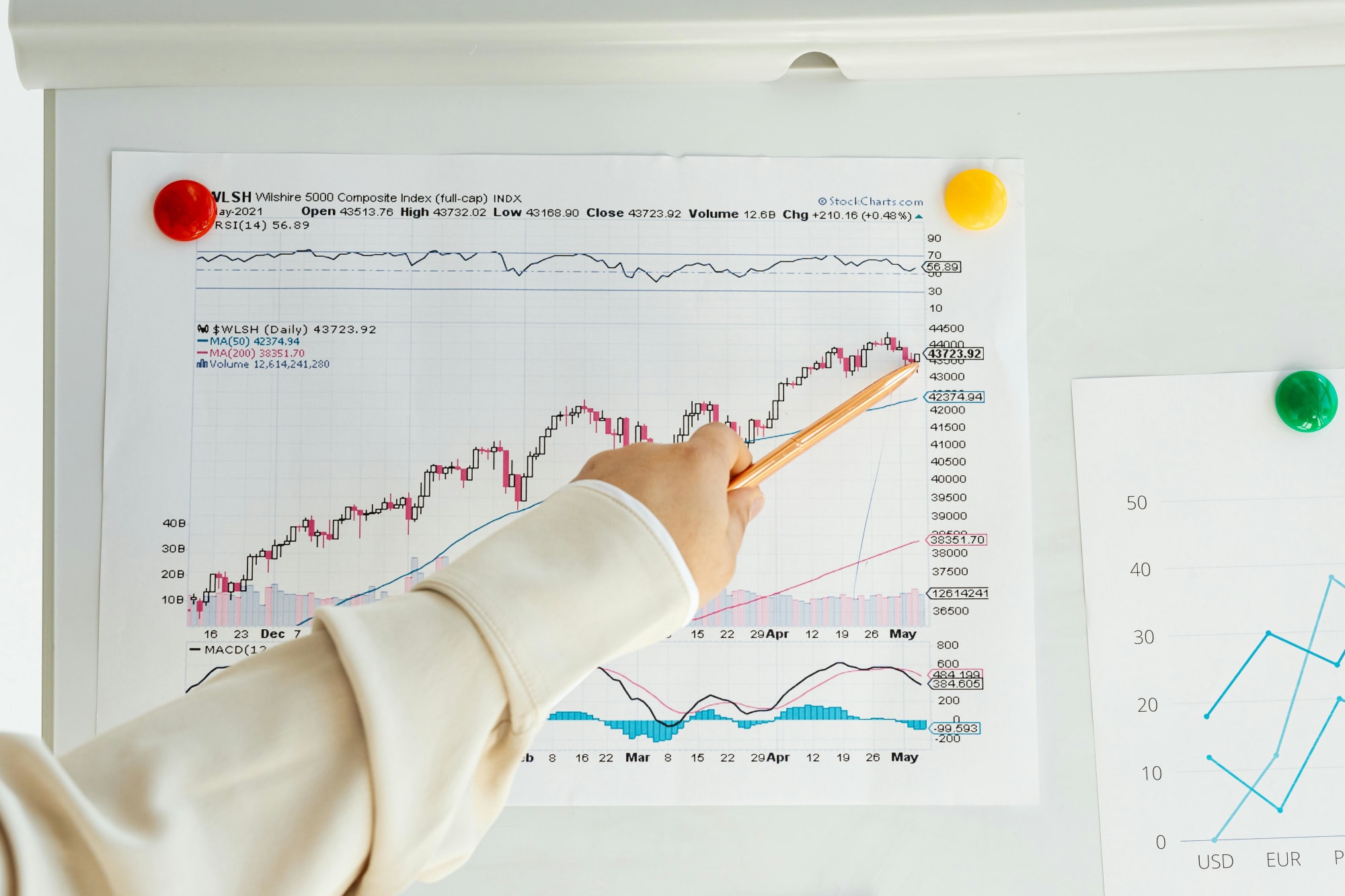Invest
Australia set to face mounting pressure on climate change inaction
The Biden administration has warned that it won’t shy away from challenging countries whose inaction on climate change is setting the world back, as Australia is tipped to face mounting pressure due to unambitious net-zero emissions targets.
Australia set to face mounting pressure on climate change inaction
The Biden administration has warned that it won’t shy away from challenging countries whose inaction on climate change is setting the world back, as Australia is tipped to face mounting pressure due to unambitious net-zero emissions targets.

The two-day virtual summit on Earth Day will see Prime Minister Scott Morrison dial in early tomorrow morning, with major world powers committing to take stronger action on climate change.
US President Joe Biden is reportedly set to announce a more ambitious target to cut his country’s emissions at least in half by 2030, after UK Prime Minister Boris Johnson pledged a 78 per cent cut by 2034.
“The UK will be home to pioneering businesses, new technologies and green innovation as we make progress to net zero emissions, laying the foundations for decades of economic growth in a way that creates thousands of jobs,” Mr Johnson said in a statement.
Australia’s current target is 26 to 28 per cent below 2005 levels by 2030. However, Mr Morrison has refused to set a time frame on Australia’s “road to net-zero”, simply implying it will not happen in the inner-city wine bars.

In a speech the PM gave at the Business Council of Australia, Mr Morrison put the onus on businesses, although current policy settings suggest Australia will not reach its climate change goals.
Not willing to admit this possible failure, Mr Morrison said Australia would reach net-zero as “quickly as possible, and preferably by 2050”.
“I’m increasing in confidence with the plan that we’re developing to achieve that.”
“We are not going to meet our climate change targets through punishing taxes. I am not going to tax our industries off the planet. We are going to meet our ambitions with the smartest minds, the best technology and the animal spirits of our business community,” Mr Morrison said.
Prior to the commencement of the summit, Australia has pledged to spend an extra $540 million on clean energy projects, as Australia prepares for the climate summit.
The PM announced $275.5 million will be committed to accelerate the development of four additional clean hydrogen hubs in regional Australia and implement a clean hydrogen certification scheme, and a further $263.7 million to support the development of carbon capture and storage (CCS) and carbon capture utilisation and storage (CCUS) projects and hubs.
“It is essential we position Australia to succeed by investing now in the technologies that will support our industries into the future, with lower emissions energy that can support Australian jobs,” the Prime Minister said.
“There is a strong appetite from business for the new emissions reduction technologies that they know will be needed to run their operations and keep employing Australians and grow jobs for the future.
“World-leading projects like these are about cutting emissions and creating jobs.”
However, Richie Merzian, climate and energy director at The Australia Institute think tank, hit out against Australia’s climate change plan, highlighting that Australia will likely be forced to do some heavy lifting under the Biden administration.
“This is a federal government that will do the absolute minimum required to just keep its seat at the table, but do nothing beyond that,” Mr Merzian said.
About the author

About the author


Economy
RBA's hawkish stance reflects inflation concerns, State Street economist comments
In a recent statement, the Reserve Bank of Australia (RBA) has signaled a hawkish stance on interest rates, drawing insights from financial experts about the implications for Australia's economic ...Read more

Economy
Navigating the inflation maze: How CFOs can outsmart economic hurdles in Australia
Fresh inflation data have cooled expectations of near-term rate cuts in Australia, intensifying pressure on margins, capital allocation and demand. Rather than wait for monetary relief that may not ...Read more

Economy
Inflation concerns rise as Australia's CPI climbs to 3.8% in October
Australia's latest Consumer Price Index (CPI) figures have sent ripples through the economy, with headline inflation accelerating to 3.8% year-on-year in October, up from 3.6% in September. The data, ...Read more

Economy
October CPI results pose challenges for RBA’s monetary policy stance
In a surprising turn of events, the October Consumer Price Index (CPI) data has raised eyebrows among economists and market strategists, revealing stronger-than-expected inflationary pressures in ...Read more

Economy
Global deal activity declines by 6% amid economic uncertainty, reports GlobalData
In a year characterised by economic turbulence and evolving market conditions, global deal activity has witnessed a notable downturn during the first ten months of 2025. According to GlobalData, a ...Read more

Economy
Australia’s softening labour market puts another RBA cut in play — here’s what business should do now
A four-year high in unemployment has revived expectations the Reserve Bank could deliver another rate cut as soon as November. With quarterly GDP growth running at 0.6 per cent and annual growth at ...Read more

Economy
Rising CPI reinforces RBA’s stance as rate cut expectations remain: State Street
State Street Global Advisors says the Reserve Bank of Australia (RBA) is likely to hold its current policy outlook following the release of September quarter inflation data, which showed an unexpected ...Read more

Economy
NSW SES boosts tsunami preparedness ahead of World Tsunami Awareness Day
As World Tsunami Awareness Day approaches on 5 November, the New South Wales State Emergency Service (NSW SES) is ramping up efforts to enhance tsunami preparedness along the east coastRead more

Economy
RBA's hawkish stance reflects inflation concerns, State Street economist comments
In a recent statement, the Reserve Bank of Australia (RBA) has signaled a hawkish stance on interest rates, drawing insights from financial experts about the implications for Australia's economic ...Read more

Economy
Navigating the inflation maze: How CFOs can outsmart economic hurdles in Australia
Fresh inflation data have cooled expectations of near-term rate cuts in Australia, intensifying pressure on margins, capital allocation and demand. Rather than wait for monetary relief that may not ...Read more

Economy
Inflation concerns rise as Australia's CPI climbs to 3.8% in October
Australia's latest Consumer Price Index (CPI) figures have sent ripples through the economy, with headline inflation accelerating to 3.8% year-on-year in October, up from 3.6% in September. The data, ...Read more

Economy
October CPI results pose challenges for RBA’s monetary policy stance
In a surprising turn of events, the October Consumer Price Index (CPI) data has raised eyebrows among economists and market strategists, revealing stronger-than-expected inflationary pressures in ...Read more

Economy
Global deal activity declines by 6% amid economic uncertainty, reports GlobalData
In a year characterised by economic turbulence and evolving market conditions, global deal activity has witnessed a notable downturn during the first ten months of 2025. According to GlobalData, a ...Read more

Economy
Australia’s softening labour market puts another RBA cut in play — here’s what business should do now
A four-year high in unemployment has revived expectations the Reserve Bank could deliver another rate cut as soon as November. With quarterly GDP growth running at 0.6 per cent and annual growth at ...Read more

Economy
Rising CPI reinforces RBA’s stance as rate cut expectations remain: State Street
State Street Global Advisors says the Reserve Bank of Australia (RBA) is likely to hold its current policy outlook following the release of September quarter inflation data, which showed an unexpected ...Read more

Economy
NSW SES boosts tsunami preparedness ahead of World Tsunami Awareness Day
As World Tsunami Awareness Day approaches on 5 November, the New South Wales State Emergency Service (NSW SES) is ramping up efforts to enhance tsunami preparedness along the east coastRead more








